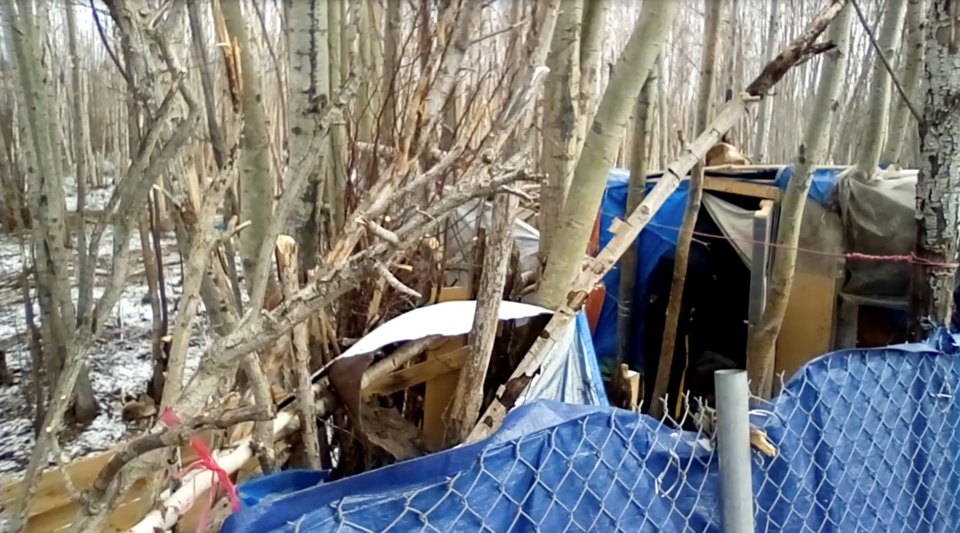Homelessness is commonly framed as an urban issue, but a new report from the Rural Development Network (RDN) is shining light on the often-invisible problem of housing insecurity in Alberta’s rural, remote, and Indigenous communities.
For the 2023 Housing and Service Needs Estimation, RDN partnered with 21 communities to survey people from across the province, including Lac La Biche, Bonnyville, Barrhead, and Athabasca. Insights from the survey indicate that women, 2SLGBTQIA+, and Indigenous people are disproportionately at risk of housing insecurity in rural Alberta.
“The data coming out of the 2023 provincial estimation are highlighting some very concerning trends — data indicates that vulnerable or minority population groups are at much higher risk for housing insecurity in rural, remote, and Indigenous communities,” said Emma Wallace, project manager of community development and homelessness estimations at RDN.
Ninety-three per cent of 2SLGBTQIA+ respondents were identified as being housing insecure, as were 91 per cent of Indigenous people who participated in the survey. Compared to men, women were 1.4 times more likely to be housing insecure.
Underlying the outsized impact on marginalized groups is emerging evidence that rural communities as a whole are grappling with rates of homelessness even higher than their city counterparts, said Sydney Stenekes, director of homelessness initiatives at RDN.
“There has been some really interesting research that has come out over the last couple of years by Dr. Rebecca Schiff, who has found that homelessness is occurring in rural areas at per-capita rates that are greater than urban centres,” she said.
“There is this misconception that homelessness is occurring at higher per-capita rates in urban centres, but we're actually finding evidence and research that suggests otherwise. I think that could speak to some of the overrepresentation as well.”
Marginalized communities in rural and remote parts of the province also continue to face unique challenges, such as a lack of appropriate services and supports, “because there are fewer and fewer services and resources in general,” Stenekes said.
The report noted people experiencing housing insecurity described feelings of judgment and incidents of discrimination and racism in their community.
“One of the recommendations that that we highlighted in the report is to really encourage community conversations and education surrounding housing insecurity,” Stenekes said.
“It takes time to make these types of changes, but hopefully that can start to encourage some discussion around empathy and compassion for folks who are experiencing housing insecurity and then that could better serve, specifically, folks representing these marginalized groups.”
One surprising finding of the report was how often people overlook their own housing needs, she said. About 48 per cent of respondents self-identified as being housing secure, but a closer examination revealed people living without electricity, clean drinking water, and otherwise inadequate conditions.
Stenekes again stressed the importance of community conversation and education so that these people can be identified and moved into more appropriate, secure housing.
The top three reasons respondents gave for housing insecurity were low wages, inability to afford rent or mortgage payments, and rising rent costs. For shelters and service programs in rural Alberta, money is also a major problem.
“The majority, if not all, of homelessness funding goes to the seven cities. There's no specific funding outside of some winter shelter response funding that was given to a select number of rural communities,” Stenekes said.
“Last year, there was no actual homelessness funding earmarked for rural, remote, and Indigenous communities in Alberta from the provincial government. Without funding, appropriate services and housing options ultimately can't be offered in some of these communities.”
Currently, the bulk of funding for rural homelessness initiatives in Alberta comes from the Reaching Home Program, a federal strategy aimed at reducing and preventing homelessness across Canada.
“We're really calling on all levels of government to contribute more funding,” Stenekes said. “Considering that we're serving approximately 34 or 35 per cent of Alberta's population, the funding that we get in comparison to the urban centres is minuscule.”
"The data provided by the Rural Development Network in the 2023 Alberta Housing and Services Needs Estimation will help us make targeted decisions to address housing insecurities and other aspects of homelessness in Alberta. We will continue to work with partners to help create safe, stable, and affordable housing throughout Alberta and across Canada,” Randy Boissonnault, minister of employment, workforce development and official languages, said in a news release.




